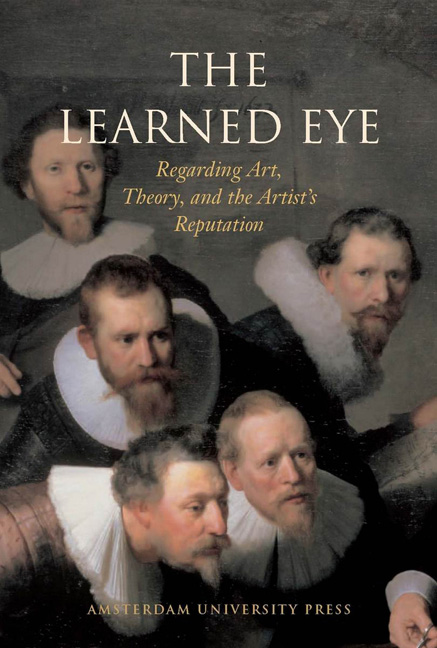The Portrait of Theodorus Schrevelius
Published online by Cambridge University Press: 25 January 2021
Summary
Theodorus Schrevelius (1572-1649), started his career as a schoolmaster in Haarlem and was headmaster of the Latin school in Leiden from 1625 to 1642. In this article I will draw attention to a painted portrait of this famous humanist and historiographer, which was, as I will argue, made by Frans Hals (FIG. 1). Two engraved copies after this painting exist: one by Jacob Matham (1571-1631) (FIG. 2) and one by Jonas Suyderhoef (ca. 1613-1686) (FIG. 3), to which a poem by Caspar Barleaus has been added. The two engravings and their respective differences are essential in determining the authorship of the original painting. A discussion of the painting in relation to the prints will also shed light on interesting questions concerning the copying of paintings in print during the seventeenth century.
It is not until 1909 that this portrait of Schrevelius shows up with certainty, when it is described adequately for the first time by Moes. Half a century earlier it is already regarded as a Frans Hals in the archives, but the names of Scriverius and Schrevelius are mixed up and the dates are misinterpreted. In 1970 Seymour Slive accepted the dated but unsigned painting unconditionally in his Frans Hals, a catalogue raisonné of all the known works by the master. In the catalogue of the major Frans Hals exhibition of 1989/1990 his ideas remained unchanged. Almost at the same moment when Slive's studies were published, Grimm expressed the opinion that it was impossible that this portrait, together with twenty-four other small portraits accepted by Slive, could have been produced by Hals’ brush.
Since we know almost all these paintings from seventeenth-century engravings mentioning Frans Hals as the one who pinxit the originals, all these rejected works are, according to Grimm, copies after lost originals. With this massive and categorical rejection this author created a new and interesting phenomenon. These paintings have never physically formed a group: they were made in all stages of Hals’ career and engraved by different artists, and yet are all lost. A possible explanation for this unfortunate loss may be that these paintings were thrown away after being used as an example for reproduction in the engravings.
- Type
- Chapter
- Information
- The Learned EyeRegarding Art, Theory, and the Artist’s Reputation, pp. 47 - 56Publisher: Amsterdam University PressPrint publication year: 2005



